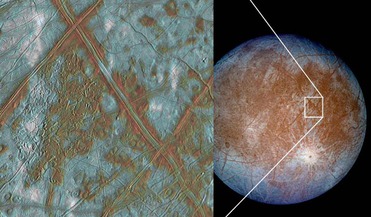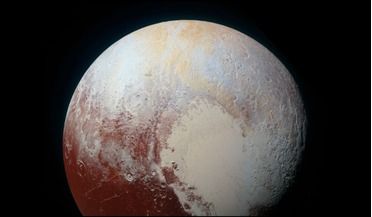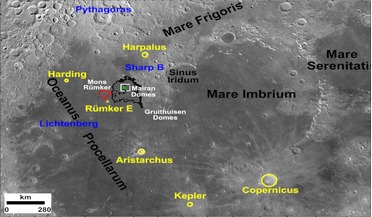 15 April 2016
Shifting ice on Europa could be warmer than anticipated
15 April 2016
Shifting ice on Europa could be warmer than anticipated
... how places on Europa that look like melt-through or mushy ice. Now, experiments by geoscientists from Brown and Columbia universities suggest that tidal dissipation could create far more heat in Europa's ice than scientists had...
 26 April 2021
Microbes could potentially live beneath Mars' surface, new study suggests
26 April 2021
Microbes could potentially live beneath Mars' surface, new study suggests
... put the Martian subsurface depths within reach. "The subsurface is one of the frontiers in Mars exploration," says Brown University professor Jack Mustard, co-leader of the study. "We've investigated the atmosphere, mapped the surface with different...
 22 June 2016
Does a subsurface ocean exist on Pluto?
22 June 2016
Does a subsurface ocean exist on Pluto?
...to get an up-close look at the dwarf planet – a Brown University Ph.D. Student has suggested that a subsurface ocean may still be... today," said Noah Hammond, a graduate student in Brown's Department of Earth, Environmental and Planetary Sciences, and...
 04 October 2016
Results of this years Nobel Prize in Physics is released
04 October 2016
Results of this years Nobel Prize in Physics is released
... that only change step-wise. In the early 70s, David J. Thouless now at the University of Washington, USA and J. Michael Kosterlitz now at Brown University, USA, pioneered work that showed that superconductivity or suprafluidity could occur in a flat...
 27 September 2021
Early findings from Chang'e 5 samples shows a mix of "exotic" materials
27 September 2021
Early findings from Chang'e 5 samples shows a mix of "exotic" materials
... droplets, the type formed from rapidly cooled volcanic glassy material. Qian and colleagues from Brown University and the University of Münster suggest that these glassy droplets came from now extinct volcanic vents known as 'Rima...